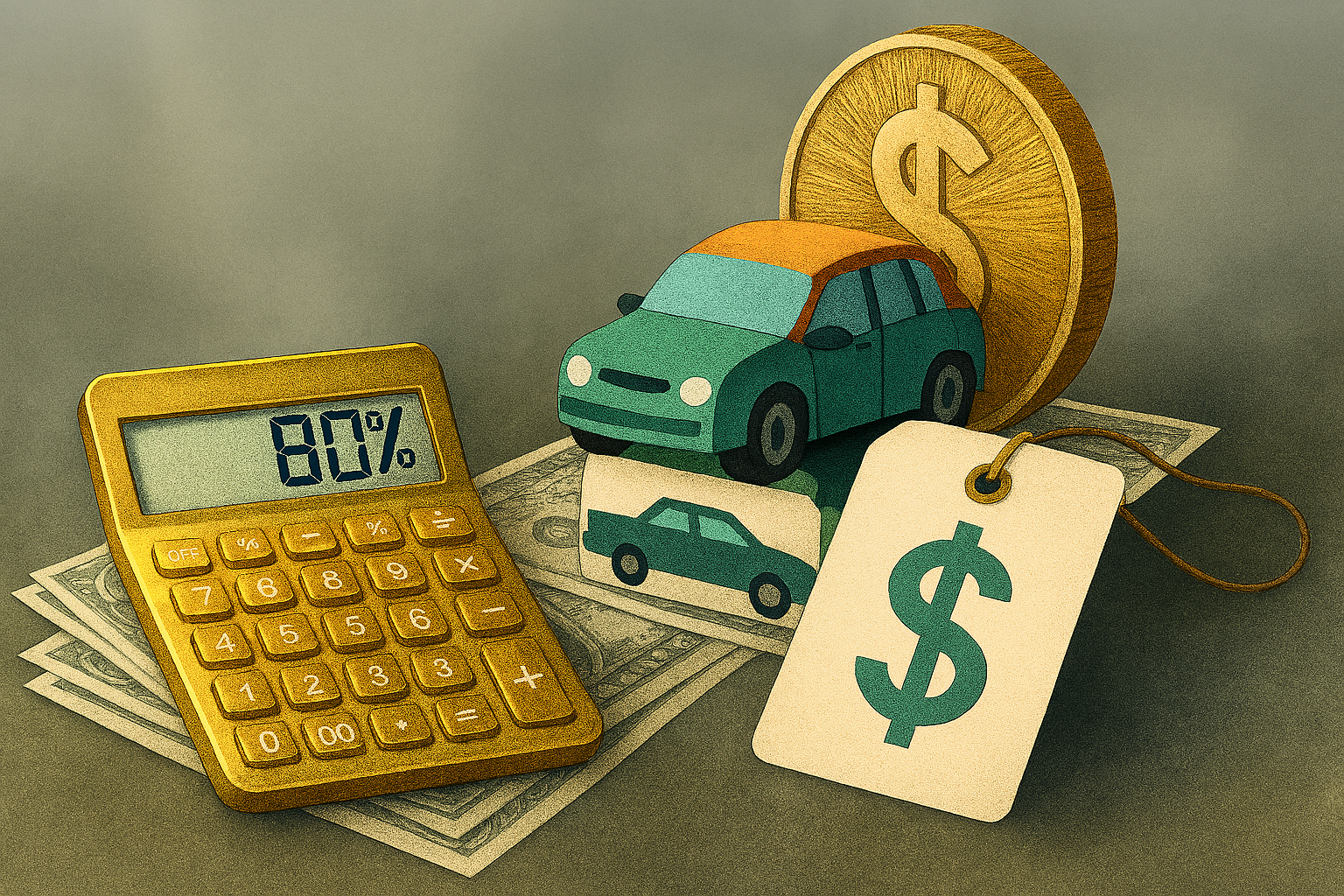When buying a car, most people focus on the sticker price. It’s the number on the windshield, the headline in the ad, and the starting point for negotiation. But when it comes to financing, the sticker price is only part of the equation. What really determines your long-term cost is the loan-to-value ratio or the relationship between how much you borrow and what the car is actually worth.
Understanding this ratio can help you avoid inflated interest rates, unnecessary fees, and hidden loan triggers that quietly increase your total cost over time.
What Is Loan-to-Value Ratio?
The loan-to-value ratio (LTV) compares the amount of your loan to the market value of the car. For example, if you finance $25,000 for a car valued at $30,000, your LTV is roughly 83 percent. The lower the ratio, the less risk the lender takes on, which often translates to better loan terms for you.
Lenders use LTV to assess how secure the loan is. A high ratio means you’re borrowing close to or more than the car’s value, which increases the lender’s exposure if the vehicle depreciates or gets totaled. That risk is priced into your loan through higher interest rates, mandatory insurance requirements, or stricter repayment conditions.
Why Sticker Price Can Be Misleading
The sticker price is a starting point, not a final cost. It doesn’t account for:
- Dealer markups or discounts
- Manufacturer incentives
- Trade-in value
- Down payment
- Taxes, registration, and fees
You might negotiate a lower price or qualify for rebates, but if you finance the full amount without a substantial down payment, your LTV could still be high. That’s where many buyers get caught off guard. They think they got a good deal based on the sticker, but the financing terms tell a different story.
How LTV Affects Your Loan Terms
A lower loan-to-value ratio can unlock better financing options. Here’s how:
- Lower interest rates – Lenders reward lower-risk loans with more favorable rates.
- Fewer insurance requirements – You may avoid mandatory GAP coverage or extended warranties.
- More flexible terms – You’re more likely to qualify for shorter loan durations or lower monthly payments.
- Higher approval odds – A strong LTV can offset a moderate credit score or limited income history.
On the flip side, a high LTV can trigger additional costs. Lenders may require you to purchase add-ons, accept longer terms, or pay higher rates to compensate for the risk.
Common Loan Triggers That Inflate Costs
Certain conditions in your loan agreement can activate higher costs over time. These loan triggers often relate to your LTV and include:
- Rolling over negative equity – If you owe money on a trade-in, adding that balance to your new loan increases your LTV and total cost.
- Minimal down payment – Financing nearly 100 percent of the car’s value leaves no buffer for depreciation.
- Financing add-ons – Including warranties, service plans, or accessories in your loan increases the amount borrowed without increasing the car’s value.
- Buying used without adjusting for value – Financing a used car at retail price without verifying its market value can result in an inflated LTV.
How to Improve Your Loan-to-Value Ratio
You don’t need perfect credit or a huge budget to improve your LTV. Here are practical steps:
- Make a larger down payment – Even a few thousand pesos can significantly lower your LTV and improve your loan terms.
- Avoid financing extras – Pay for accessories or warranties separately if possible.
- Verify the car’s market value – Use trusted valuation tools to ensure the price aligns with current market conditions.
- Negotiate trade-in value wisely – A strong trade-in can reduce the amount you need to borrow.
Sticker price may grab your attention, but loan-to-value ratio determines your financial reality. It influences your interest rate, monthly payments, and total cost over time. By focusing on LTV instead of just the price tag, you can secure better financing, avoid costly loan triggers, and make a smarter investment in your next vehicle.




